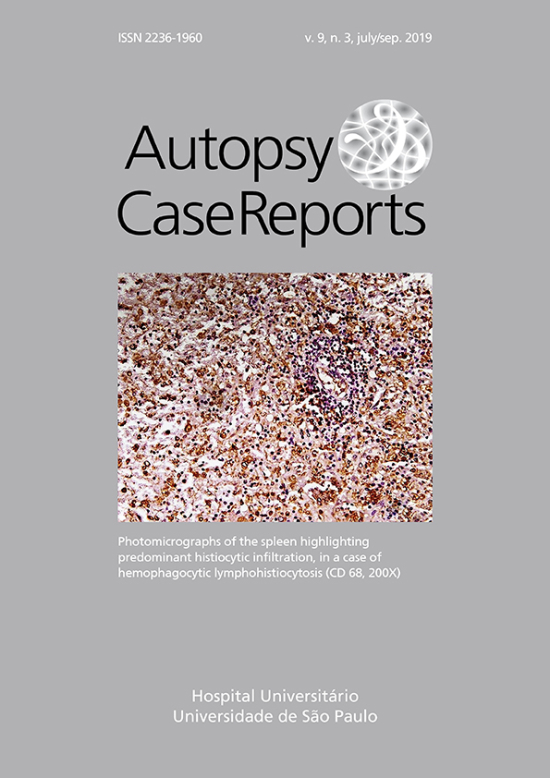Primary splenic angiosarcoma: a rare entity often associated with rupture and hemoperitoneum
DOI:
https://doi.org/10.4322/acr.2019.100Keywords:
Splenic Diseases, Splenomegaly, Hemangiosarcoma, Splenic RuptureAbstract
Primary splenic angiosarcoma (PSA) is a rare neoplasm of vascular origin associated with aggressive behavior and poor prognosis. The clinical presentation is usually non-specific and is mostly characterized by a wasting disease with anemia and splenomegaly, mimicking a wide range of entities. The authors present the case of an 80-year-old woman with cardiovascular comorbidities with a 6-month history of weight loss, fatigue, weakness, pallor, and abdominal pain. The physical examination showed massive splenomegaly and pallor. After a thorough evaluation that ruled out lymphoproliferative diseases, the working diagnosis was a myelodysplastic disorder. A few days after discharge, she returned to the emergency room with severe abdominal pain, worsening fatigue, and a remarkable pallor. Point-of-care ultrasound showed free intraperitoneal fluid. Spleen rupture was confirmed by abdominal computed tomography (CT) scan, and an emergency laparotomy with splenectomy was performed. The postoperative period was uneventful, and the patient recovered in a few days. The histopathology confirmed the diagnosis of PSA and the patient was referred to an oncological center. Two months later staging CT demonstrated liver and peritoneal metastases, and despite the chemotherapy she died 6 months after the diagnosis.
Downloads
Published
Issue
Section
License
Copyright
Authors of articles published by Autopsy and Case Report retain the copyright of their work without restrictions, licensing it under the Creative Commons Attribution License - CC-BY, which allows articles to be re-used and re-distributed without restriction, as long as the original work is correctly cited.



